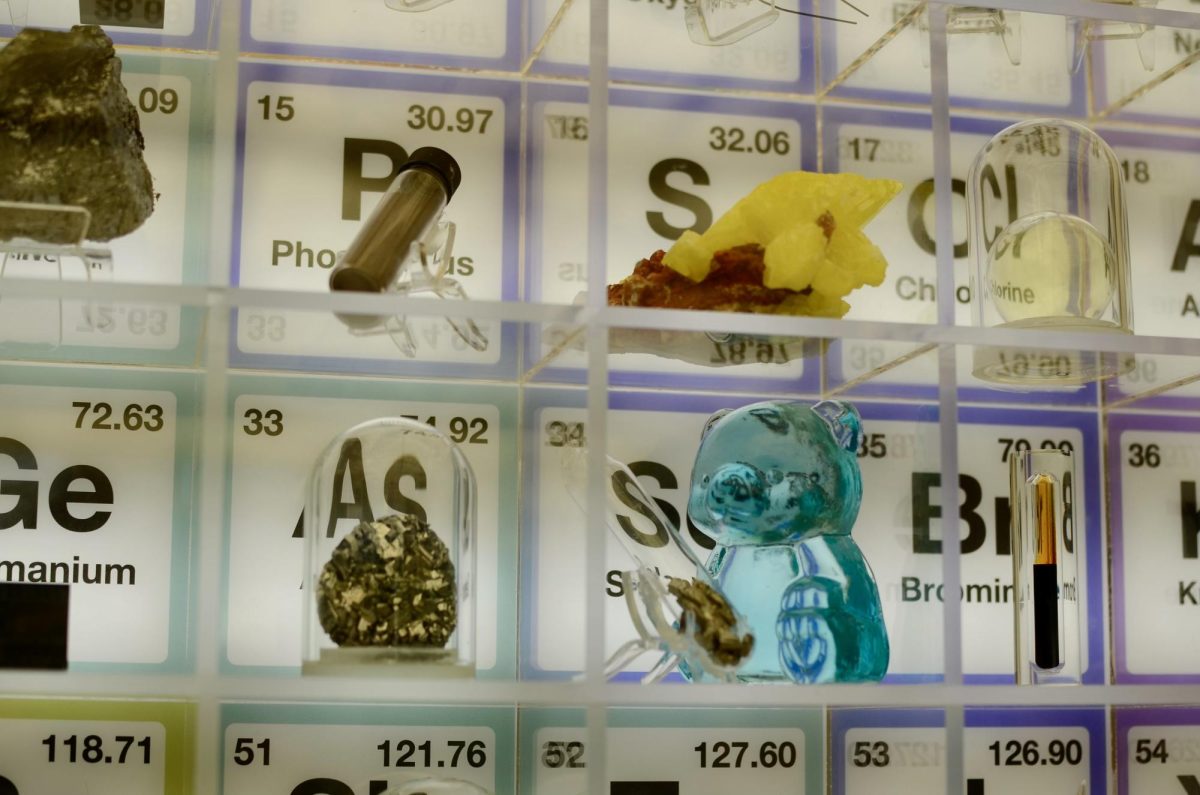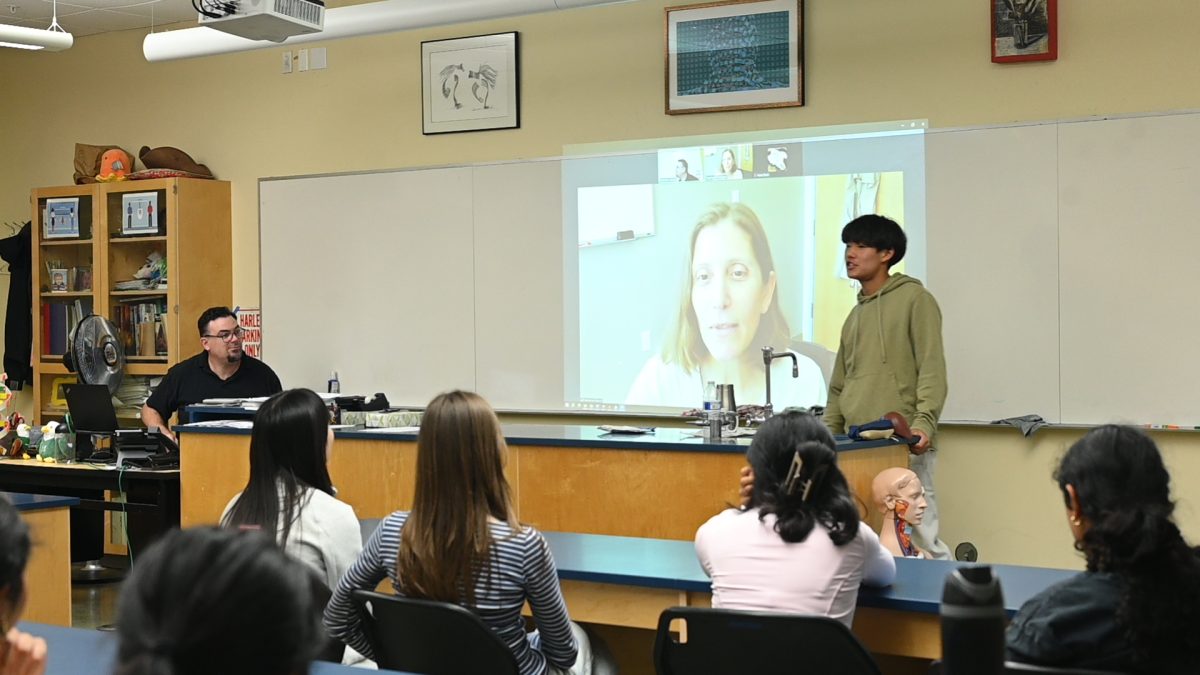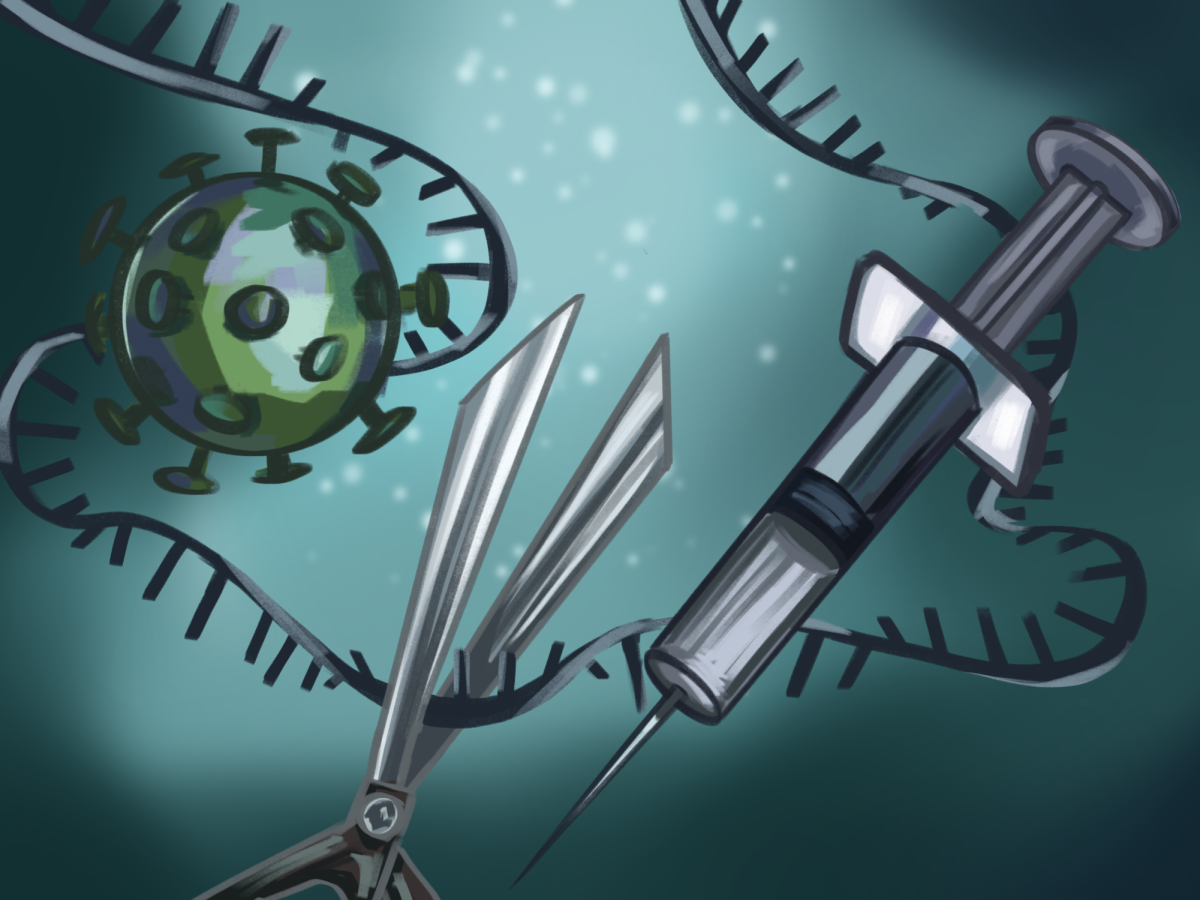A new periodic table exhibit was installed on the upper level of Nichols Hall after the 2022-2023 school year’s final exams. The table offers students an opportunity to see physical samples of several elements. Students often gather around the table to observe the elements and visually engage with abstract chemistry concepts.
Over the past summer, upper school chemistry teacher Andrew Irvine collaborated with upper school science department head Anita Chetty and administrators, including upper school division head Paul Barsky and head of school Brian Yager, to install the new periodic table exhibit.
“I love materials, and most chemistry and science teachers [do] too,” Irvine said. “You see a piece of paper as a periodic table, that’s one thing. But if you can see it in real life, it’s [a] different thing.”
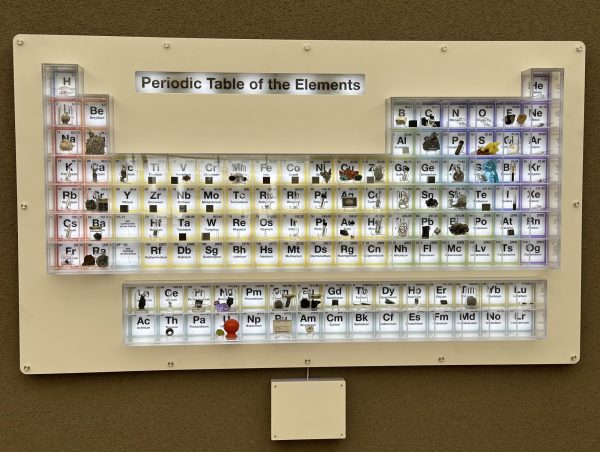
The periodic table currently contains physical samples of about 100 elements. For elements which are physically unprocurable, upper school science teacher and department head Anita Chetty notes that scientists that are named after the elements are showcased instead.
“You’ll see there are some elements which we don’t have a sample of because they only exist in nuclear reactors or in laboratory conditions for very brief periods of time,” Chetty said. “We’re highlighting or showcasing the scientist it was named after, but we can’t actually get the element. It’s not available in its pure form on the planet.”
According to Chetty, the exhibit took approximately four months to construct. Chetty also noted that chemistry was the only major scientific field without an exhibit in Nichols Hall, which motivated the department to create one. For instance, the Foucault pendulum in the Nichols Rotunda acts as a physics display, and both the saltwater reef aquarium and the freshwater tanks serve as biology exhibits.
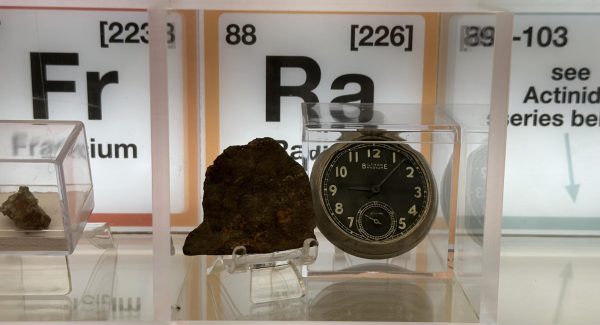
“We’ve been trying to make the building a place that invites students to come and learn more than what we’re teaching them in the classroom,” Chetty said. “We want to extend the learning, [and] we want to find things that are more interactive.”
To install the periodic table, the department had to find a reasonably priced vendor for installation, run electricity through the concrete wall and install LED lights in the exhibit with a circuit that would light up each box in the periodic table display.
“I looked and found a local plastic fabricator, and I didn’t know there was anything like that, but I found one,” Irvine said. “There was one from the East Bay called Mr. Plastic, and we got a quote that was pretty reasonable. And then [we] went through different designs and [for] several months [we] went back and forth the design process, and they put together this wonderful display.”
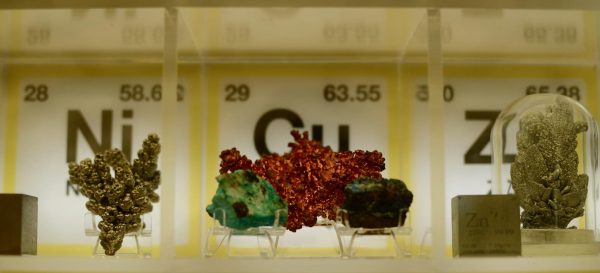
To further the educational benefits of the exhibition, the department plans to create a QR code for the periodic table so students can learn more about the elements while looking at them.
Chemistry student Koby Yu (10) believes that seeing the elements of the periodic table in person can motivate students to explore chemistry further.
“[I] thought [the installation of the periodic table] was awesome,” Koby said. “Taking chemistry, it was interesting to see all the elements that we’ve only ever heard about. I’ve never actually seen them, so it’s interesting to put a face to the name.”
Additional reporting by Olivia Xu.




![LALC Vice President of External Affairs Raeanne Li (11) explains the International Phonetic Alphabet to attendees. "We decided to have more fun topics this year instead of just talking about the same things every year so our older members can also [enjoy],” Raeanne said.](https://harkeraquila.com/wp-content/uploads/2025/10/DSC_4627-1200x795.jpg)


















![“[Building nerf blasters] became this outlet of creativity for me that hasn't been matched by anything else. The process [of] making a build complete to your desire is such a painstakingly difficult process, but I've had to learn from [the skills needed from] soldering to proper painting. There's so many different options for everything, if you think about it, it exists. The best part is [that] if it doesn't exist, you can build it yourself," Ishaan Parate said.](https://harkeraquila.com/wp-content/uploads/2022/08/DSC_8149-900x604.jpg)




![“When I came into high school, I was ready to be a follower. But DECA was a game changer for me. It helped me overcome my fear of public speaking, and it's played such a major role in who I've become today. To be able to successfully lead a chapter of 150 students, an officer team and be one of the upperclassmen I once really admired is something I'm [really] proud of,” Anvitha Tummala ('21) said.](https://harkeraquila.com/wp-content/uploads/2021/07/Screen-Shot-2021-07-25-at-9.50.05-AM-900x594.png)







![“I think getting up in the morning and having a sense of purpose [is exciting]. I think without a certain amount of drive, life is kind of obsolete and mundane, and I think having that every single day is what makes each day unique and kind of makes life exciting,” Neymika Jain (12) said.](https://harkeraquila.com/wp-content/uploads/2017/06/Screen-Shot-2017-06-03-at-4.54.16-PM.png)








![“My slogan is ‘slow feet, don’t eat, and I’m hungry.’ You need to run fast to get where you are–you aren't going to get those championships if you aren't fast,” Angel Cervantes (12) said. “I want to do well in school on my tests and in track and win championships for my team. I live by that, [and] I can do that anywhere: in the classroom or on the field.”](https://harkeraquila.com/wp-content/uploads/2018/06/DSC5146-900x601.jpg)
![“[Volleyball has] taught me how to fall correctly, and another thing it taught is that you don’t have to be the best at something to be good at it. If you just hit the ball in a smart way, then it still scores points and you’re good at it. You could be a background player and still make a much bigger impact on the team than you would think,” Anya Gert (’20) said.](https://harkeraquila.com/wp-content/uploads/2020/06/AnnaGert_JinTuan_HoHPhotoEdited-600x900.jpeg)

![“I'm not nearly there yet, but [my confidence has] definitely been getting better since I was pretty shy and timid coming into Harker my freshman year. I know that there's a lot of people that are really confident in what they do, and I really admire them. Everyone's so driven and that has really pushed me to kind of try to find my own place in high school and be more confident,” Alyssa Huang (’20) said.](https://harkeraquila.com/wp-content/uploads/2020/06/AlyssaHuang_EmilyChen_HoHPhoto-900x749.jpeg)



